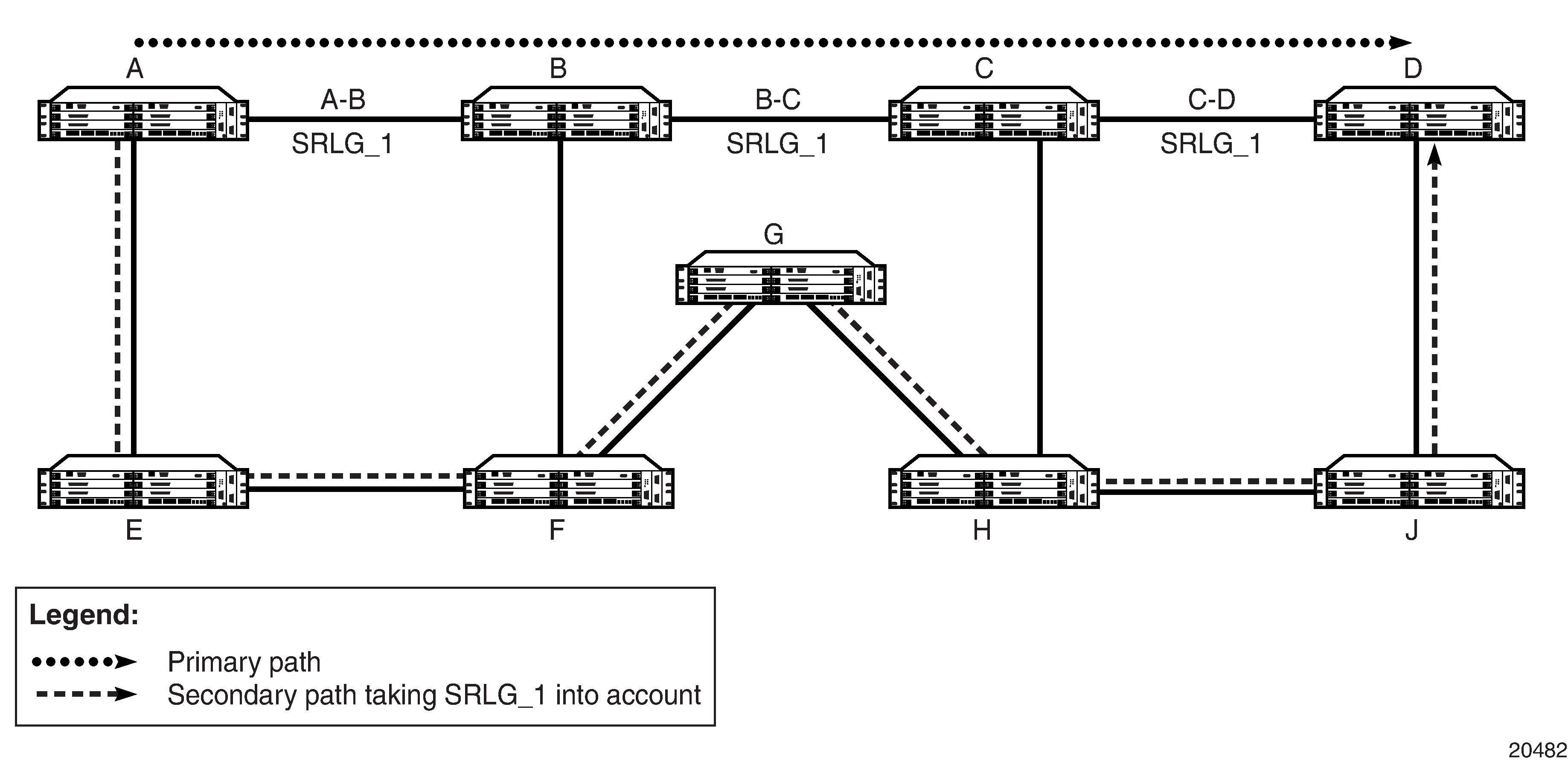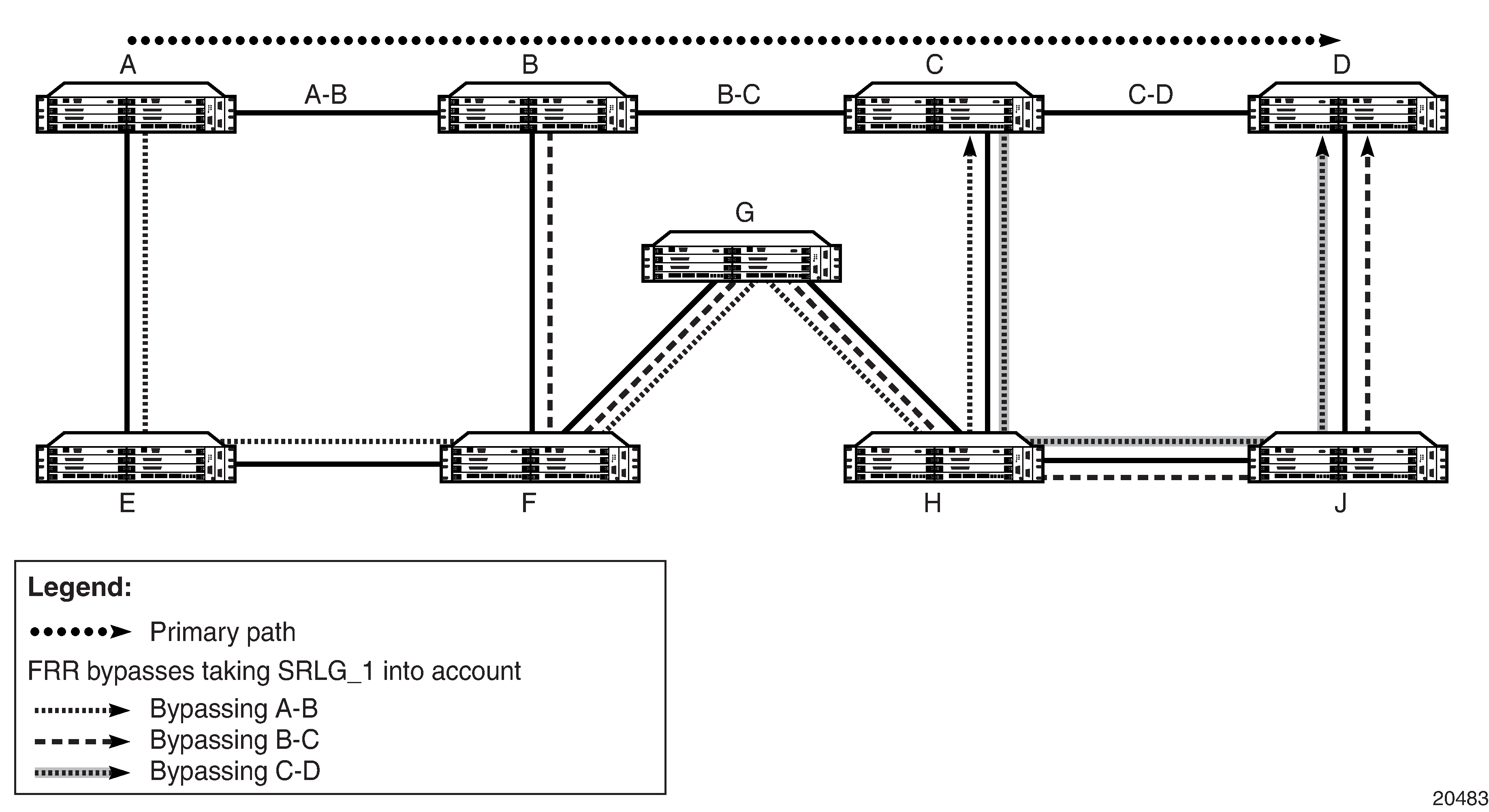A typical application of the SRLG feature is to provide automatic setup of secondary LSPs or FRR bypass or detour LSPs, in order to minimize the probability that they share the same failure risks with the primary LSP path (see Figure: Disjoint Primary and Secondary LSPs and Figure: Disjoint FRR Bypass LSPs).
Figure: Disjoint Primary and Secondary LSPs illustrates SRLG when LSP redundancy is used, where SRLG_1 contains the interfaces that define links A-B, B-C, and C-D. The primary path uses these links to connect node A to node D. In the event of a failure along the primary path, the secondary path cannot use any of the links in SRLG_1 and takes the path from node A to nodes E, F, G, H, J, and D.
Figure: Disjoint FRR Bypass LSPs illustrates SRLG when FRR bypass is used, where SRLG_1 is the same as in Figure: Disjoint Primary and Secondary LSPs. Since FRR bypass is used, the following possible reroutes may occur, depending on where the failure occurs:
if node B fails, the bypass is from node A to nodes E, F, G, H, and C
if node C fails, the bypass is from node B to nodes F, G, H, J, and D
if link C-D fails, the bypass is from node C to nodes H, J, and D
The SRLG feature is supported on OSPF and IS-IS interfaces for which RSVP-TE is enabled.
The following steps describe how to enable SRLG disjoint backup paths for LSP redundancy and FRR.
LSP Redundancy for Primary/Secondary (standby) SRLG Disjoint Configuration
Create an SRLG-group (similar to creating an admin group).
Link the SRLG-group to MPLS interfaces.
Configure primary and secondary LSP paths, and enable SRLG on the secondary LSP path. The SRLG secondary LSP paths will always perform a strict CSPF query.
The setting of the srlg-frr command is irrelevant in this case (see the srlg-frr command).
FRR Bypass Tunnel or Detour LSP SRLG Disjoint Configuration
Create an SRLG-group (similar to creating an admin group).
Link the SRLG-group to MPLS interfaces.
Enable the strict option on the srlg-frr command, which is a system-wide command that forces the CSPF calculation for every LSP path to take any configured SRLG memberships into account.
Configure primary FRR (facility backup or one-to-one backup) LSP paths. Each PLR will create a bypass or detour LSP that will only avoid the SRLG memberships configured on the primary LSP path egress interface. For one-to-one backup, detour-detour merging is out of the control of the PLR. The PLR will not ensure that the FRR detour will be prohibited from merging with a colliding detour LSP. For facility backup, given that there are several bypass types to bind to, the priority rules shown in Disjoint and Non-disjoint Paths are used.
Manually configured bypasses that do not use CSPF are not considered as possible backup paths.

